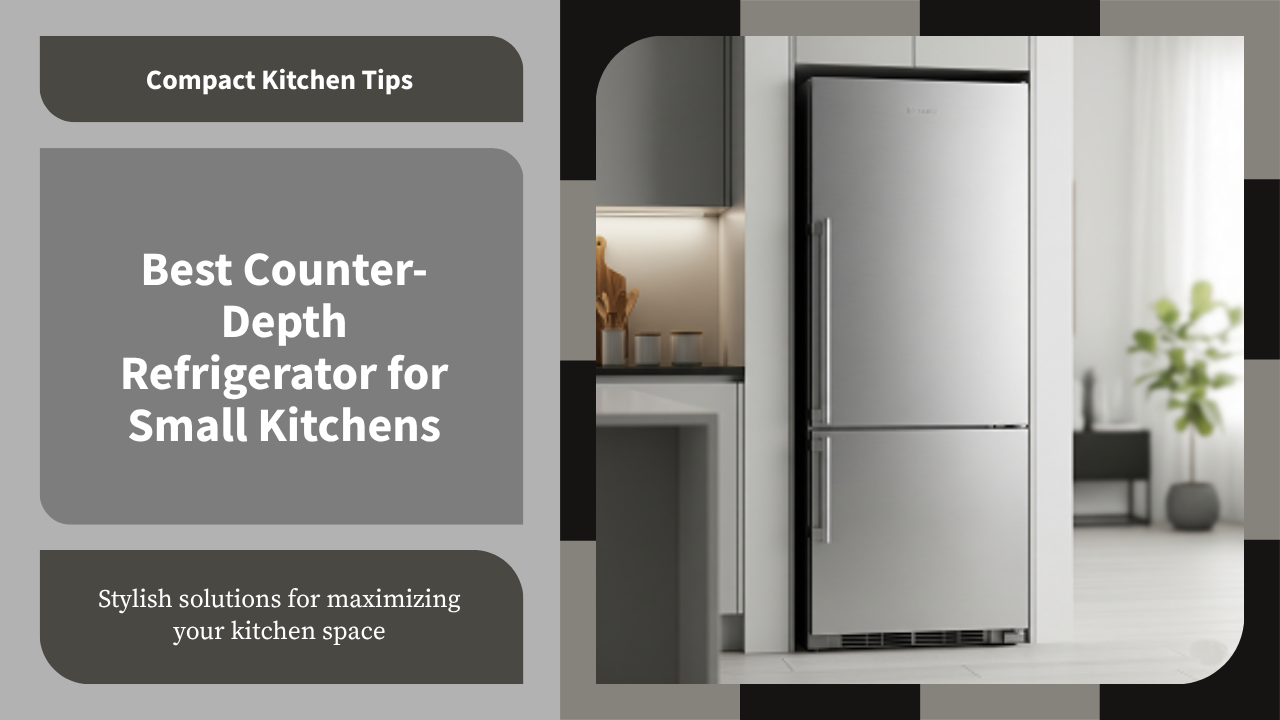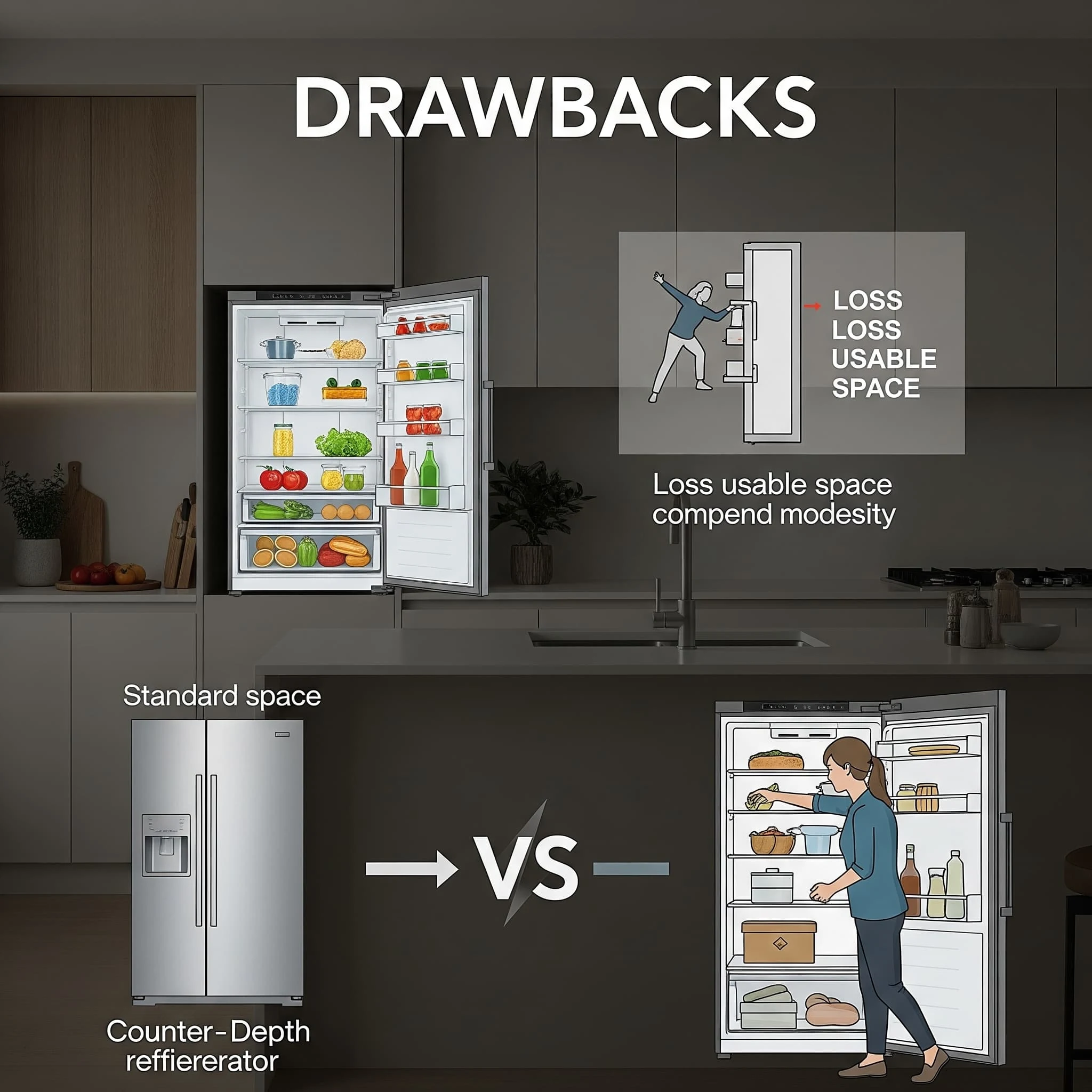Best counter-depth refrigerator for small kitchens
When designing a modern kitchen, homeowners want appliances that blend seamlessly into their space without sacrificing functionality. One popular choice is the counter-depth refrigerator, a sleek alternative to standard-depth models that offers a built-in look without the high cost of a fully integrated unit.
But what exactly is a counter-depth refrigerator, and is it the right choice for your home? In this in-depth guide, we’ll explore the benefits, drawbacks, and key considerations of counter-depth fridges, helping you decide whether they’re worth the investment. We’ll also compare them to traditional refrigerators, highlight top brands, and provide expert tips for choosing the best model for your kitchen layout.
But what exactly is a counter-depth refrigerator, and is it the right choice for your home? In this in-depth guide, we’ll explore the benefits, drawbacks, and key considerations of counter-depth fridges, helping you decide whether they’re worth the investment. We’ll also compare them to traditional refrigerators, highlight top brands, and provide expert tips for choosing the best model for your kitchen layout.
What Is a Counter-Depth Refrigerator?
A counter-depth refrigerator is designed to align with standard kitchen countertops (typically 24 to 30 inches deep), creating a flush, built-in appearance. Unlike traditional refrigerators, which can protrude up to 36 inches or more, these models sit nearly even with cabinets, enhancing kitchen aesthetics.Key Features of Counter-Depth Fridges:
- Shallower depth (24-30 inches, excluding handles)
- Standard width (30-36 inches, similar to full-size models)
- Built-in or freestanding options (some mimic high-end built-in designs at a lower cost)
Why Choose a Counter-Depth Refrigerator?
1. Seamless, Built-In Aesthetic
For homeowners who prioritize modern kitchen design, counter-depth refrigerators eliminate the bulky look of traditional models. They blend effortlessly with cabinetry, making them ideal for open-concept kitchens and upscale remodels.Did You Know? A 2023 Kitchen & Bath Design News survey found that 62% of homeowners consider aesthetics a top priority when selecting appliances, driving demand for counter-depth models.
2. Improved Kitchen Flow & Space Efficiency
Standard refrigerators can stick out 6-12 inches beyond countertops, disrupting foot traffic and making small kitchens feel cramped. Counter-depth models sit flush, improving movement, especially in galley kitchens, apartments, or compact homes.3. Easier Access to Food
Because they’re not as deep, items are less likely to get lost in the back. It means less food waste and quicker access to everyday essentials—a major perk for busy households.4. Increased Home Value
A cohesive, high-end kitchen can significantly boost a home's resale appeal. According to Realtor.com, matching and modern appliances rank among the top features home buyers look for.Potential Drawbacks of Counter-Depth Refrigerators
While these fridges offer style and space-saving benefits, they aren’t perfect for everyone.Here are some key trade-offs:
Pro Tip: Look for adjustable shelving, pull-out drawers, and door bins to maximize space efficiency.
1. Reduced Storage Capacity
Due to their shallower design, counter-depth models typically offer 10-20% less storage than standard refrigerators. Larger families may find them restrictive unless opting for a wider or premium model with smart storage solutions.Pro Tip: Look for adjustable shelving, pull-out drawers, and door bins to maximize space efficiency.
2. Higher Upfront Cost
Counter-depth refrigerators often cost 10-30% more than comparable full-depth models due to their premium design. Built-in versions can be even pricier.3. Fewer Style & Feature Options
While more brands now offer counter-depth models, selection may be limited in terms of:- Finishes (stainless steel, black stainless, panel-ready)
- Configurations (French door vs. side-by-side)
- Smart features (Wi-Fi connectivity, touch screens)
Who Should Buy a Counter-Depth Refrigerator?
Best For:
- ✔ Design-focused homeowners who want a luxury kitchen look without custom-built-ins
- ✔ Small to medium-sized kitchens where space optimization is key.
- ✔ Households of 1-3 people (unless choosing an extra-wide model).
Not Ideal For:
- ✖ Large families who need maximum storage capacity.
- ✖ Budget-conscious shoppers are unwilling to sacrifice space for aesthetics.
- ✖ Those who prefer deep freezers (many counter-depth models have smaller freezer sections).
Counter-depth vs standard-depth refrigerator comparison
|
Feature |
Counter-Depth Refrigerator |
Standard-Depth Refrigerator |
|
Depth |
24-30 inches |
30-36 inches |
|
Storage Capacity |
10-20% less |
More spacious |
|
Price |
10-30% more expensive |
More budget-friendly |
|
Aesthetics |
Flush with counters |
Protrudes into the kitchen |
|
Best For |
Small kitchens, modern designs |
Large families, storage needs |
Top-rated counter-depth fridge brands 2024
If you’re considering a counter-depth fridge, here are some of the best-rated options in 2024:
1. Bosch 800 Series
- Why Buy? Ultra-sleek design, FlexBar® door storage, and Home Connect® smart features.
- Best For: High-end kitchens with smart home integration.
2. LG InstaView™ Door-in-Door
- Why Buy? Knock-to-see glass panel, energy-efficient, and spacious interior.
- Best For: Tech-savvy buyers who want convenience.
3. Samsung Bespoke 4-Door Flex
- Why Buy? Customizable panels, dual ice makers, and Family Hub® touchscreen.
- Best For: Personalized kitchen aesthetics.
4. GE Profile PVD28BYNFS
- Why Buy? Advanced cooling tech, a hands-free autofill water pitcher, and Wi-Fi enabled.
- Best For: Families who want smart features without sacrificing style.
Are counter-depth refrigerators worth it?
Counter-depth refrigerators strike the perfect balance between style and functionality, making them ideal for modern kitchens where aesthetics matter. While they may not offer as much storage as standard fridges, their space-saving design and upscale look often justify the trade-off for the right buyer.
Key Takeaways:
✅ Pros:
- Seamless, built-in appearance
- Better kitchen flow & accessibility
- Increased home resale value
❌ Cons:
- Less storage capacity
- Higher upfront cost
- Fewer configuration options
Who Should Buy One?
- Homeowners renovating for a luxury kitchen
- Smaller households or couples
- Those with narrow kitchens or open-concept layouts
.png)








.png)
